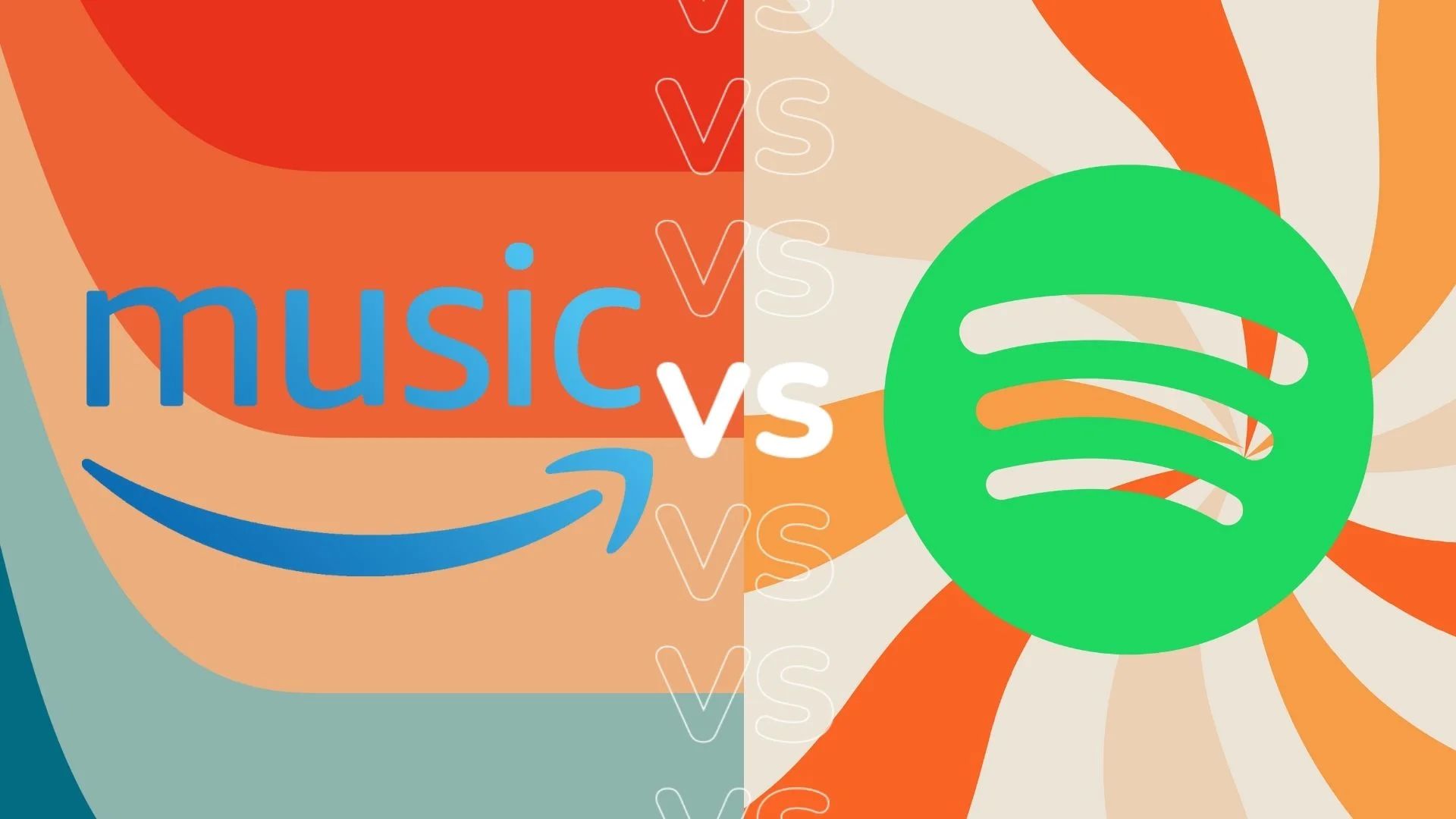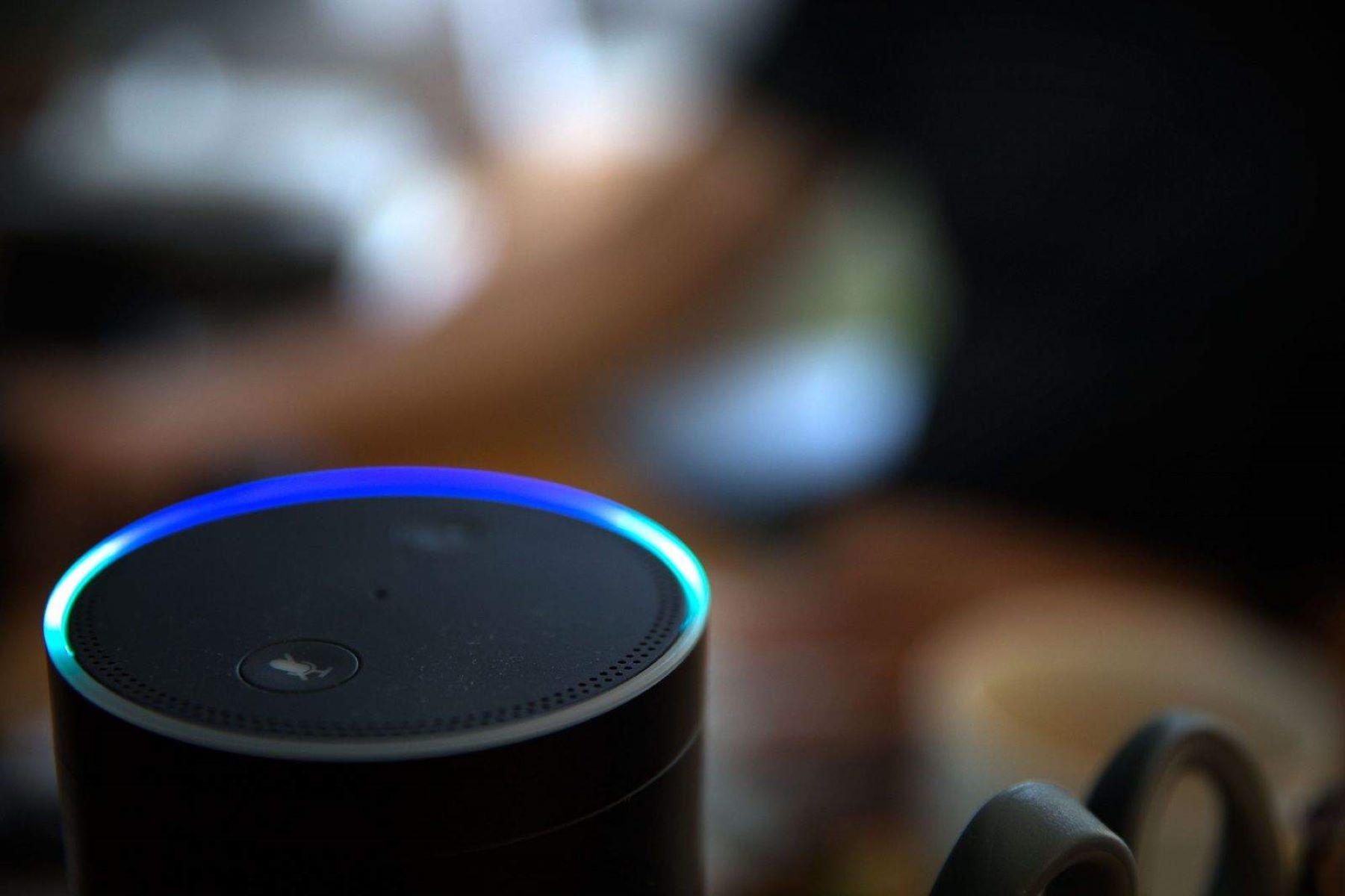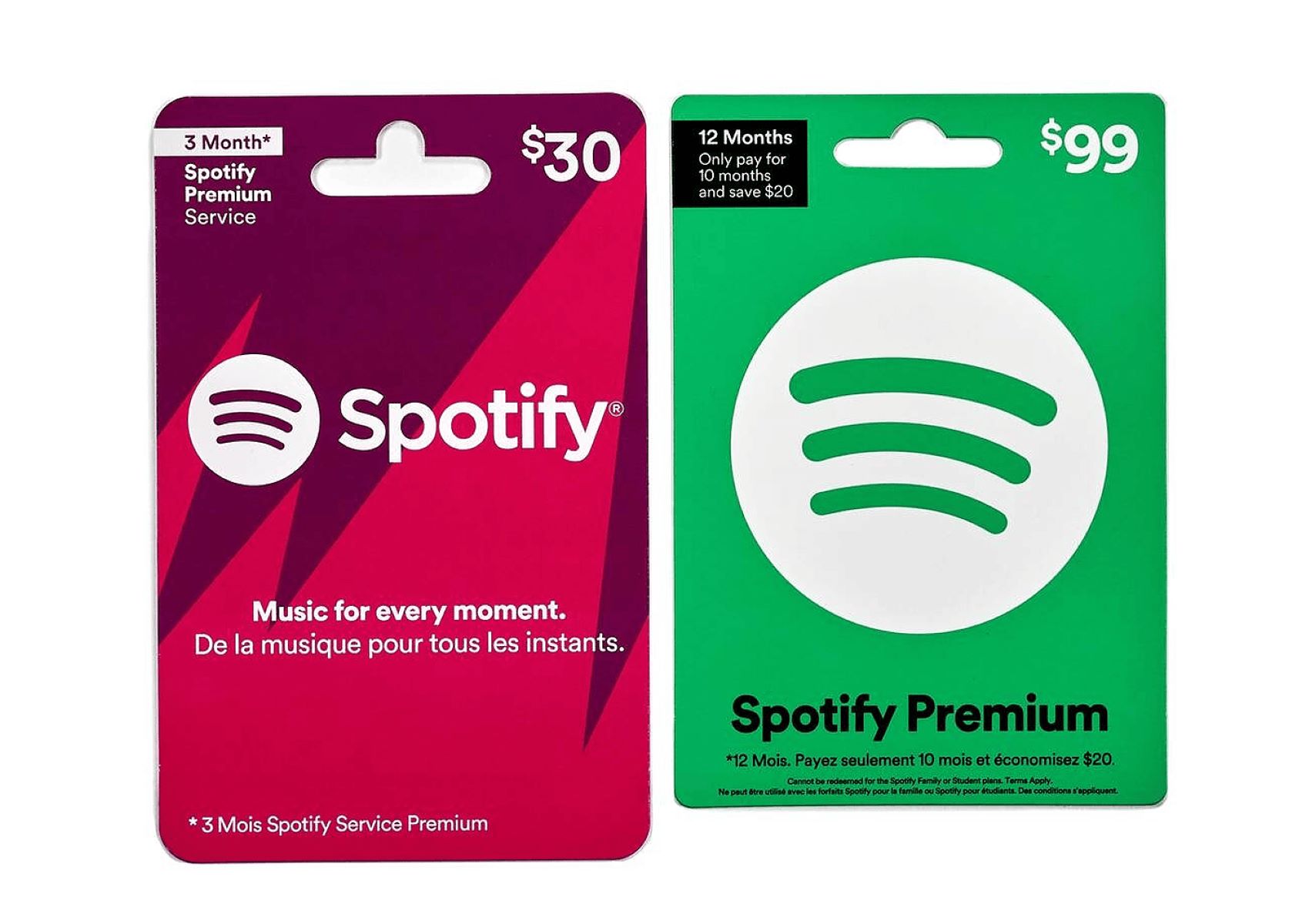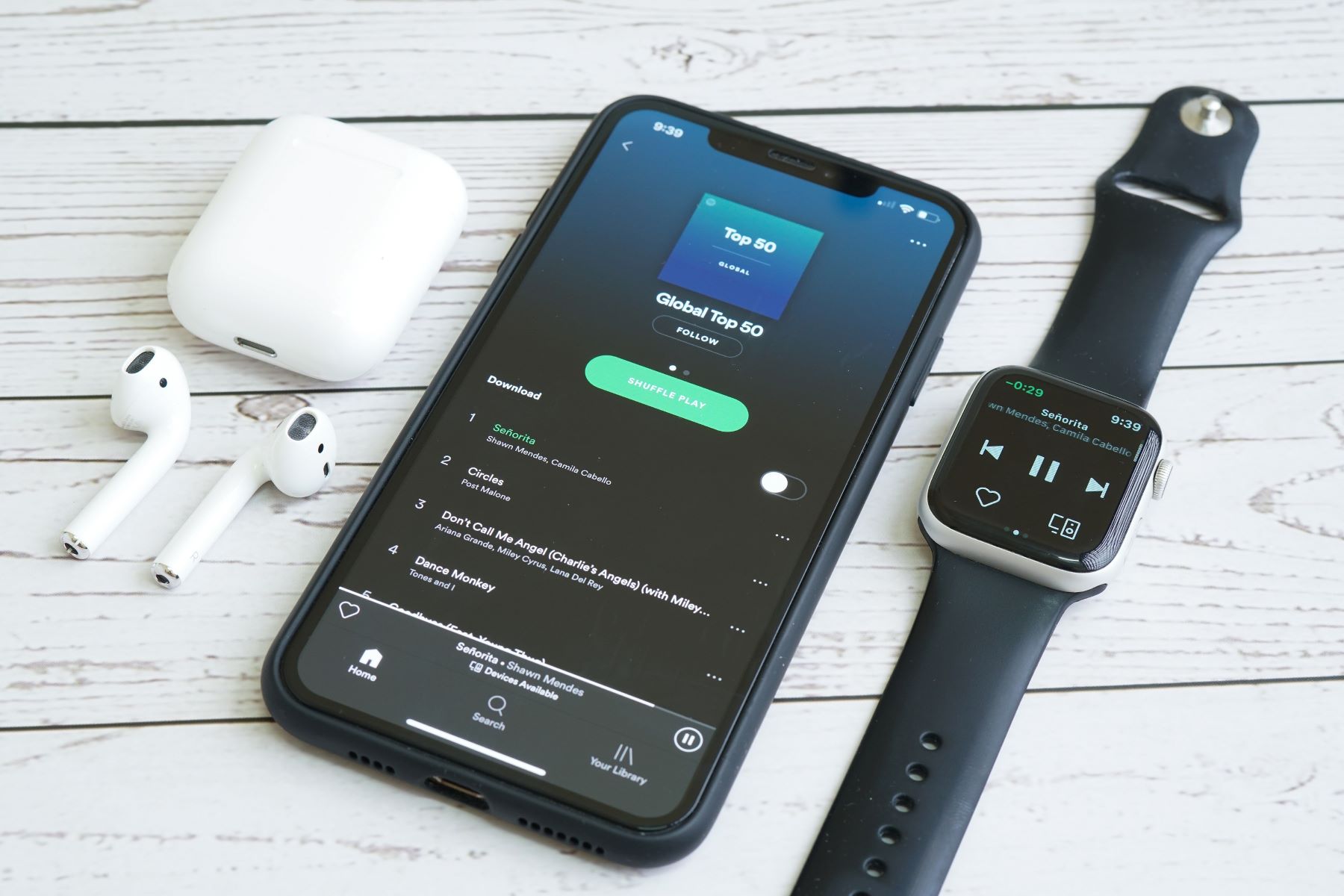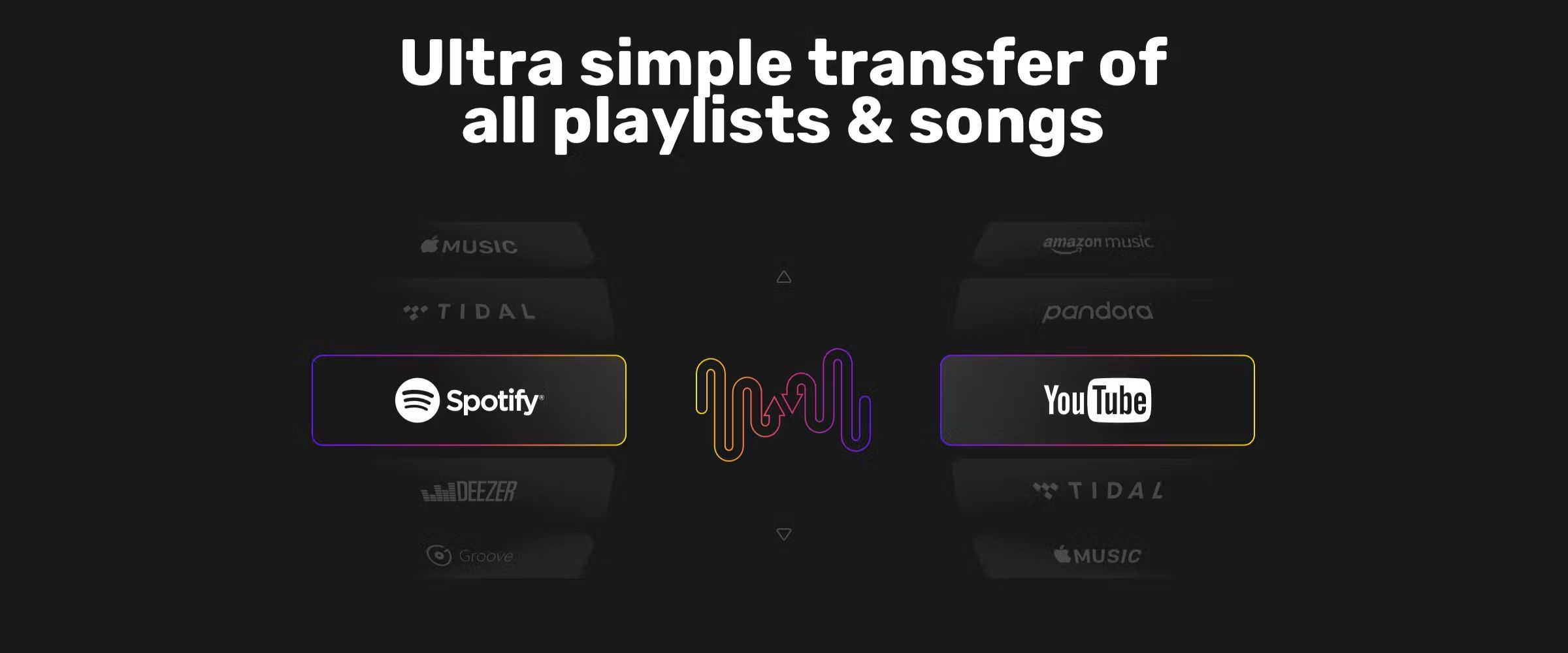Introduction
When it comes to streaming music, two popular platforms that come to mind are Amazon Music and Spotify. Both services offer millions of songs at your fingertips, but which one is better? In this article, we will compare Amazon Music and Spotify across various aspects and help you decide which platform suits your needs and preferences.
Amazon Music, launched in 2007, is Amazon’s answer to the growing demand for music streaming. With a range of subscription options and integration with other Amazon services, it has garnered a significant user base. On the other hand, Spotify, established in 2008, has quickly become a top choice for music enthusiasts. With its extensive music library and personalized recommendation algorithms, it has set the benchmark for music streaming platforms.
Both Amazon Music and Spotify offer features such as curated playlists, offline listening, and compatibility with various devices. We will delve into the specific details of each platform to help you make an informed decision. Whether you are a music aficionado looking for the most comprehensive library or someone seeking a seamless user experience, this comprehensive comparison will guide you in selecting the right platform for your music streaming needs.
So, whether you prefer to listen to mainstream hits, discover new artists, or explore niche genres, read on to find out which music streaming service, Amazon Music or Spotify, is better suited for you.
Price and Subscription Options
One of the primary considerations when choosing a music streaming service is the price and subscription options available. Both Amazon Music and Spotify offer a range of plans to cater to different needs and budgets.
Amazon Music provides two main subscription tiers: Amazon Music Free and Amazon Music Unlimited. Amazon Music Free allows you to listen to a limited selection of songs with occasional ads. However, if you want access to a wider music catalog and an ad-free experience, you can opt for Amazon Music Unlimited. With Amazon Music Unlimited, you can choose between an individual plan or a family plan, which allows up to six members to stream simultaneously. Additionally, Amazon Prime members can enjoy a discounted subscription to Amazon Music Unlimited.
On the other hand, Spotify offers several subscription options as well. Their free tier allows you to listen to music with occasional ads and some limitations in features. If you want unlimited access to their vast music library and an ad-free experience, Spotify offers Spotify Premium. This premium plan also enables offline listening, higher audio quality, and the ability to skip tracks without restrictions. They also have a student plan and a family plan that caters to students and families at discounted rates.
Overall, both Amazon Music and Spotify provide affordable options. Amazon Music may be more appealing to Amazon Prime members due to the discounted subscription rates. However, Spotify’s free tier provides more features compared to Amazon Music Free, making it a great option for budget-conscious users.
When it comes to price and subscription options, the choice between Amazon Music and Spotify ultimately depends on your budget, the features you prioritize, and any other specific requirements you may have. Consider your music streaming habits and financial situation to determine which platform provides the best value for your needs.
Music Library and Catalog
The size and diversity of a music streaming service’s library play a crucial role in determining its appeal. Both Amazon Music and Spotify boast vast catalogs with millions of songs across various genres. However, there are some differences to consider.
Amazon Music offers access to over 75 million songs, including popular hits and a wide range of international and independent music. It also provides exclusive access to songs and albums from popular artists through their “Amazon Originals” program. Amazon Music focuses on providing a robust music library with a wide selection of genres to cater to different musical tastes.
On the other hand, Spotify boasts an extensive music library of over 70 million songs. It offers an impressive collection of mainstream hits, as well as an extensive catalog of niche genres, indie music, and international tracks. Spotify’s commitment to curating and promoting music from emerging artists through their playlists and editorial features sets them apart in terms of music discovery and diversity.
Both platforms allow you to browse for music based on specific genres, moods, decades, and more. However, Spotify’s intuitive interface and powerful recommendation algorithms make it easier to discover new artists and songs that align with your tastes. Their personalized playlists, such as “Discover Weekly” and “Release Radar,” are known for their accuracy in delivering tailored recommendations.
In terms of music library and catalog, Spotify has a slight edge due to its extensive music collection and superior music discovery features. However, if you have specific preferences for exclusive releases or want access to international and independent music, Amazon Music can be a compelling choice.
Ultimately, the choice between Amazon Music and Spotify in terms of music library and catalog depends on your personal music preferences and the level of importance you place on music discovery and diversity. Take into consideration the genres you listen to and the variety of music you want to explore before making a decision.
Audio Quality
The audio quality of a music streaming service is a crucial aspect to consider, especially for audiophiles and those who value a pristine listening experience. Both Amazon Music and Spotify offer different audio quality options, allowing users to choose their preferred level of sound quality.
Amazon Music provides a variety of audio quality options to suit different preferences and internet connection speeds. The service offers streaming in standard quality (up to 256 kbps), high definition (HD) quality (up to 850 kbps), and Ultra HD quality (up to 3730 kbps). High definition and Ultra HD options are available for specific devices and require a compatible audio setup to fully appreciate the enhanced audio experience.
On the other hand, Spotify offers three main audio quality settings: Normal, High, and Very High. The Normal setting streams at approximately 96 kbps, the High setting at 160 kbps, and the Very High setting at 320 kbps. Spotify’s Very High quality setting provides a more detailed and immersive listening experience, while the Normal and High settings are suitable for users with limited internet bandwidth or those who prioritize conserving data usage.
It is worth noting that the audio quality of both platforms is affected by factors such as your internet connection speed, device compatibility, and the playback settings you choose. If audio quality is a top priority for you, it is recommended to use a stable and high-speed internet connection and select the highest available audio quality settings on the respective platforms.
In terms of audio quality, both Amazon Music and Spotify offer options to cater to different listening preferences. Amazon Music provides a wider range of audio quality options, including high definition and Ultra HD, while Spotify focuses on providing consistent and reliable audio quality across different devices.
When choosing between Amazon Music and Spotify based on audio quality, consider your listening setup, device compatibility, and the level of importance you place on having the highest quality audio. If you have a high-end audio system and value the highest fidelity audio, Amazon Music’s HD and Ultra HD options may be more appealing. However, if you prioritize a consistent and reliable audio experience, Spotify’s Very High quality setting should suffice for most users.
Personalized Recommendations and Discovery
One of the key features that set music streaming services apart is their ability to provide personalized recommendations and facilitate music discovery. Both Amazon Music and Spotify excel in this aspect, offering users a tailored listening experience based on their preferences and listening habits.
Amazon Music uses various algorithms and data points, such as your listening history, liked songs, and artists you follow, to create personalized playlists and recommendations. Their “My Soundtrack” feature generates a custom playlist based on your mood, activity, and listening patterns. Additionally, they have curated playlists and stations for different genres and moods, helping users discover new music within their preferred genres.
Spotify is renowned for its recommendation system, which analyzes your listening behavior and provides curated playlists and recommendations based on your taste. Their popular “Discover Weekly” playlist presents a collection of songs tailored to your preferences, ensuring a fresh and diverse listening experience. Spotify also offers genre-based playlists, personalized daily mixes, and specially curated playlists from guest DJs and artists.
Another highlight of Spotify’s personalized recommendations is their “Release Radar” playlist, which features newly released tracks from your favorite artists and artists similar to those you listen to. Furthermore, Spotify’s “Made for You” section offers playlists curated specifically for you, such as “Your Daily Drive” with a blend of news and music, and “On Repeat,” highlighting your most frequently played songs.
Both Amazon Music and Spotify understand the importance of helping users discover new music and artists. However, Spotify’s robust recommendation algorithms and curated playlists make it stand out as a platform dedicated to music discovery. Amazon Music, while providing personalized recommendations, may appeal more to users seeking a broader catalog and exclusive access to music from popular artists through their “Amazon Originals.”
When it comes to personalized recommendations and music discovery, the choice between Amazon Music and Spotify depends on whether you prioritize discovering new music or having access to exclusive and popular releases. Consider your preferred method of music exploration and the level of importance you place on customization before making a decision.
User Interface and User Experience
The user interface and experience of a music streaming service play a significant role in determining its usability and overall appeal. Both Amazon Music and Spotify offer intuitive interfaces designed to enhance the user’s listening experience, but there are some notable differences to consider.
Amazon Music provides a clean and straightforward interface, with a focus on easy navigation and accessibility. The platform offers a user-friendly experience, allowing you to easily browse through your library, playlists, and recommended content. The interface is visually appealing, with album art prominently displayed, and the search functionality is robust, making it easy to find and play your favorite songs or artists.
On the other hand, Spotify is known for its sleek and modern interface. The platform’s layout is visually engaging, featuring vibrant colors and high-quality album art. Spotify’s user experience is centered around its powerful search functionality and the ability to explore curated playlists and discover new music effortlessly. The interface is designed to encourage exploration and music discovery, with personalized recommendations and playlists taking center stage.
Both platforms offer mobile apps that are well-designed and optimized for a seamless user experience. They allow for easy navigation, offline listening, and the ability to create and edit playlists on-the-go. Additionally, both Amazon Music and Spotify have desktop applications that provide similar functionalities and a consistent user experience across different devices.
When considering user interface and user experience, it ultimately comes down to personal preference. Some users may prefer the simplicity and ease of use offered by Amazon Music, while others may gravitate towards Spotify’s visually appealing design and focus on music exploration. It is recommended to try out the interfaces of both platforms to see which one resonates with your preferences and provides a more enjoyable browsing and listening experience.
Overall, both Amazon Music and Spotify excel in terms of user interface and user experience, ensuring that users can navigate the platforms effortlessly and enjoy a seamless and satisfying music streaming experience.
Offline Listening
Offline listening is a crucial feature for music streaming services, allowing users to enjoy their favorite songs and playlists without an internet connection. Both Amazon Music and Spotify offer offline listening options, but there are differences in how they approach this feature.
Amazon Music allows users to download songs, albums, playlists, and stations for offline listening. This feature is available for both its free and premium subscribers. With Amazon Music Unlimited, you can download music to your device for offline playback, making it convenient for those who want to enjoy their favorite tracks during flights or in areas with limited internet connectivity. However, it is important to note that downloaded songs are only accessible through the Amazon Music app and cannot be transferred to other devices or played outside of the app.
Spotify also offers offline listening, but it is available exclusively for Spotify Premium subscribers. With a Spotify Premium subscription, you can download your favorite songs, playlists, and podcasts for offline playback. This feature is highly valued by users who frequently travel or have limited access to an internet connection. Unlike Amazon Music, Spotify allows you to transfer downloaded music to other devices and play it on compatible devices, like smart speakers or car systems, directly from the app.
Both Amazon Music and Spotify have limitations on the number of songs you can download for offline listening, depending on your subscription type. However, it is worth mentioning that the exact number of downloads may vary based on the device’s storage capacity and available storage space.
When it comes to offline listening, the choice between Amazon Music and Spotify depends on your subscription type and the flexibility you require for offline playback. If you are an Amazon Music user and prefer to keep your offline listening confined to the Amazon Music app, their offline download feature will suffice. On the other hand, if you value the ability to transfer downloaded music across devices and play it outside of the app, Spotify’s offline listening functionality will be a better fit.
Overall, both Amazon Music and Spotify recognize the importance of offline listening and provide the necessary features to cater to users who want to enjoy their music without relying on a consistent internet connection. Consider your specific needs and usage patterns to determine which platform offers the offline listening options that align with your preferences.
Compatibility and Devices
Compatibility with different devices is an essential factor to consider when choosing a music streaming service. Both Amazon Music and Spotify offer support for a wide range of devices, ensuring that users can enjoy their favorite music on various platforms.
Amazon Music is compatible with a variety of devices, including smartphones running Android or iOS, tablets, desktop computers (Windows and macOS), smart TVs, and Amazon Echo devices. The service also supports certain car systems and audio streaming platforms, making it versatile and accessible across different devices and ecosystems. However, it is important to note that Amazon Music’s availability and features may vary depending on the region and device compatibility.
Similarly, Spotify is compatible with a range of devices, including smartphones (Android and iOS), tablets, desktop computers (Windows, macOS, and Linux), smart TVs, streaming media players, gaming consoles, and smart speakers. Spotify also integrates with various car systems, allowing seamless playback during your commutes. With its wide range of device compatibility, users can enjoy their music on their preferred devices and seamlessly switch between them.
Both platforms offer synchronized playback, allowing you to start playing music on one device and continue listening on another. This is particularly useful when transitioning from your smartphone to a smart speaker or switching between a computer and a tablet.
When it comes to compatibility and device support, both Amazon Music and Spotify offer a broad range of choices. However, it is recommended to verify the availability and functionality of each platform on specific devices you use or intend to use before making a decision.
Consider the devices you frequently use and the ecosystems you are heavily invested in to ensure that the music streaming service you choose is compatible and seamlessly integrates with your preferred devices and platforms.
Overall, both Amazon Music and Spotify prioritize compatibility and offer support for various devices, allowing users to enjoy their music across multiple platforms and devices, enhancing the flexibility and convenience of their music streaming experience.
Voice Control and Smart Home Integration
As smart home technology continues to evolve, the ability to control your music with voice commands has become increasingly popular. Both Amazon Music and Spotify offer voice control and seamless integration with smart home devices, allowing users to play their favorite songs, playlists, and albums hands-free.
Amazon Music, being a service offered by Amazon, integrates seamlessly with Alexa, Amazon’s voice assistant. With an Amazon Echo device or any other smart speaker with Alexa capabilities, you can simply use voice commands to play music from Amazon Music. You can ask Alexa to play specific songs, albums, or playlists, and even request music based on your mood or genre preferences. The integration with Alexa makes it easy to control your music playback throughout your home, providing a convenient and hands-free experience.
Similarly, Spotify offers robust integration with various voice assistants, including Amazon Alexa, Google Assistant, and Apple Siri. With the Spotify app installed and linked to your preferred voice assistant, you can control your music playback using voice commands. You can ask the voice assistant to play specific songs, artists, or playlists from Spotify, and even control the volume or skip tracks without having to manually interact with your device.
Both Amazon Music and Spotify’s voice control and smart home integration capabilities extend beyond voice assistants. They also integrate with other smart home devices, such as smart TVs, streaming media players, and connected speakers. This allows you to control your music playback using voice commands through these devices, adding convenience and enhancing your overall smart home experience.
When it comes to voice control and smart home integration, both Amazon Music and Spotify offer seamless compatibility with popular voice assistants and smart home platforms. The choice between the two depends on your existing smart home ecosystem, the voice assistant you prefer, and any specific features or functionalities you require for controlling your music playback through voice commands.
Consider your existing smart home devices, the voice assistant you use or plan to use, and the extent of integration you desire when making a decision between Amazon Music and Spotify in terms of voice control and smart home integration.
Overall, both platforms offer convenient hands-free control of your music through voice commands, ensuring that you can enjoy your favorite tunes effortlessly while seamlessly integrating with your smart home devices and voice assistants.
Collaborative Playlists and Social Features
Collaborative playlists and social features have become popular aspects of music streaming services, allowing users to engage with friends, share music, and discover new songs collectively. Both Amazon Music and Spotify offer collaborative playlists and social features, but there are some differences to consider.
Amazon Music allows users to create and share playlists with others, making collaboration easy and enjoyable. You can invite friends to contribute to your playlists, allowing for a collaborative music-sharing experience. However, Amazon Music’s social features are not as robust as those offered by Spotify.
On the other hand, Spotify excels in providing a range of social features and collaborative playlist options. With Spotify, you can create collaborative playlists and invite friends to add their favorite songs. Additionally, you can follow friends and influencers to discover new music, see what they are currently playing, and browse their public playlists. Spotify’s extensive social features also include the ability to share music with friends through messaging apps and social media platforms, making music discovery and sharing a more interactive experience.
Spotify’s social integration extends further with features like the “Taste Rewind” feature, which shows you the most popular tracks from different time periods based on your listening preferences, allowing you to reminisce and share nostalgic music moments with friends.
The social aspects and collaborative playlist features offered by Spotify make it a standout option for users who enjoy sharing music and engaging with others. It provides a more interactive and community-driven experience compared to Amazon Music.
When considering collaborative playlists and social features, take into account your preference for sharing music with friends, discovering new songs through recommendations, and engaging with a larger music community. If you value a robust social experience and enjoy collaborating on playlists with friends, Spotify may be the better choice.
On the other hand, if you are looking for a more straightforward and simpler collaborative playlist experience, Amazon Music’s sharing options can still provide a satisfying music-sharing experience with friends.
In summary, while both Amazon Music and Spotify offer collaborative playlist features, Spotify stands out with its comprehensive social features and interactive music-sharing community. Consider your social music preferences to determine which platform resonates more with your desired music-sharing experience.
Artist and Label Exclusives
Artist and label exclusives have become a common strategy for music streaming services to attract and retain subscribers. These exclusives offer users access to content that is only available on a specific platform. Both Amazon Music and Spotify have secured exclusive deals with artists and labels, providing unique content to their users. However, there are differences in the extent and nature of these exclusives.
Amazon Music has focused on securing high-profile exclusives, particularly with well-known artists and labels. They have collaborated with artists to release exclusive tracks, albums, and live performances through their “Amazon Originals” program. These exclusives provide Amazon Music subscribers with early access to new releases and special editions that may not be available on other platforms. Additionally, Amazon Music has formed label partnerships, resulting in exclusive content from specific record labels that can only be found on their platform.
Spotify, on the other hand, takes a different approach to exclusives. While they have secured some exclusive deals with artists in the past, their focus has shifted to offering a broader, inclusive music library and focusing on features like personalized recommendations and playlists. Spotify aims to provide users with a comprehensive music experience by offering a vast catalog that includes content from various artists and labels, rather than concentrating on exclusive content from select artists or labels.
The approach to artist and label exclusives can be a significant factor for users who have specific preferences for exclusive releases or are fans of artists who primarily release exclusive content through a specific platform. If access to exclusive content is important to you, Amazon Music may be more appealing due to their focus on securing high-profile exclusives. However, if you prefer a more diverse and inclusive music library and prioritize personalized recommendations, Spotify’s approach may suit you better.
It is worth noting that artist and label exclusives are subject to change and can vary over time as contracts and agreements evolve. Both Amazon Music and Spotify actively pursue opportunities to secure exclusives, but the availability of exclusive content can fluctuate.
Consider your preferences for exclusive content and your music consumption habits when evaluating the significance of artist and label exclusives. Ultimately, the choice between Amazon Music and Spotify in terms of exclusives depends on your specific interest in accessing exclusive content and the importance you place on it within your music streaming experience.
Podcasts and Other Audio Content
Podcasts have gained immense popularity in recent years, and music streaming services have recognized the demand for a seamless podcast listening experience. Both Amazon Music and Spotify offer a wide range of podcasts and other audio content, making it convenient for users to access their favorite shows alongside their music library.
Amazon Music has gradually expanded its podcast offerings, providing a growing collection of popular podcasts across various genres. They have also made exclusive podcast deals with notable figures and production companies. While Amazon Music’s podcast library may not be as extensive as Spotify’s, it continues to expand its content, bringing in more diverse and high-quality podcasts for its users.
Spotify, on the other hand, has invested significantly in the podcast industry, positioning itself as a leading platform for podcast discovery and production. They have acquired exclusive podcast rights and signed deals with popular figures and podcast networks. Spotify’s podcast library covers a wide range of topics and genres, making it a one-stop platform for both music and podcast lovers. They have also introduced features like “Your Daily Podcasts” and “Podcast Charts,” further enhancing the podcast listening experience on their platform.
Both Amazon Music and Spotify offer features to enhance the podcast listening experience, such as the ability to subscribe to shows, receive notifications for new episodes, and create personalized podcast playlists. Additionally, both platforms offer tools for creators to upload and distribute their podcasts, enabling aspiring podcasters to reach a wider audience.
When it comes to podcasts and other audio content, Spotify takes the lead in terms of diversity, exclusive deals, and podcast-oriented features. However, Amazon Music is also steadily growing its podcast library and providing a solid platform for podcast listeners.
Consider your podcast listening habits and preferences when choosing between Amazon Music and Spotify. If you prioritize a comprehensive podcast library, exclusive content, and a platform dedicated to podcast discovery and production, Spotify may be the preferred option. But if you are primarily looking for a music streaming service with a growing podcast catalog, Amazon Music can still provide a satisfying podcast listening experience.
In summary, both Amazon Music and Spotify recognize the increasing demand for podcasts and offer a range of features and content to cater to podcast enthusiasts, making it easy to enjoy your favorite shows alongside your music library.
Customer Support and Assistance
When using any service, including music streaming platforms, having access to reliable customer support and assistance is crucial in case you encounter any issues or have questions. Both Amazon Music and Spotify strive to provide users with helpful customer support, although there are differences in the extent of their support offerings.
Amazon Music offers various customer support options, including a comprehensive help center with FAQs and user guides that cover a wide range of topics and queries. They also provide email and chat support, allowing users to get direct assistance from their support team. Additionally, Amazon has a robust community forum where users can engage with other customers to seek advice or share their experiences.
Spotify, likewise, offers a help center with extensive FAQs and guides that can assist users in resolving common issues. They provide email support for account-related queries and technical issues. Spotify also has an active community forum, allowing users to connect with fellow users and share their knowledge and experiences.
It is important to note that while both platforms provide customer support options, the availability and response times may vary. It is recommended to check the specific support options available in your region and the expected response times before making a decision.
Additionally, user experience and customer satisfaction can also depend on the quality and accessibility of self-help resources such as FAQs and user guides. Make sure to evaluate the comprehensiveness and clarity of the support documentation provided by each platform to gauge how well they address potential issues or concerns you may have.
Consider your preference for accessible customer support channels and the level of technical assistance you anticipate requiring when choosing between Amazon Music and Spotify. However, it is important to keep in mind that customer support should not be the sole determining factor, as the actual need for assistance may vary among users.
In summary, both Amazon Music and Spotify offer customer support options, including help centers, email support, and online community forums. However, the extent and availability of support resources may vary, so it is important to consider your preferences and potential support needs before making a choice.
Conclusion
In the battle between Amazon Music and Spotify, both platforms offer compelling features and advantages that cater to different types of music enthusiasts. Let’s summarize the key points discussed throughout this comparison.
When it comes to price and subscription options, Amazon Music provides affordable plans, including discounted options for Amazon Prime members. Spotify offers a free tier with limited features, making it an attractive option for budget-conscious users.
In terms of music library and catalog, Spotify excels in offering a diverse and extensive collection of songs, including niche genres and emerging artists. However, Amazon Music appeals to those who enjoy exclusive releases and international music.
Audio quality is an important aspect for true music enthusiasts. Amazon Music provides a range of quality options, including high-definition and ultra HD, while Spotify offers consistent and reliable audio quality across different devices.
Personalized recommendations and music discovery are crucial for finding new songs and artists. Spotify’s recommendation algorithms and curated playlists set it apart in this aspect, providing users with tailored and accurate music suggestions based on their preferences.
When it comes to user interface and user experience, both platforms offer intuitive interfaces, but Spotify’s sleek design and focus on music exploration make it a favorite for many users.
Offline listening is a key feature for music streaming services, allowing users to enjoy their favorite songs without an internet connection. Both Amazon Music and Spotify offer offline listening options, but Spotify’s ability to transfer downloaded music across devices gives it an edge.
When it comes to compatibility and devices, both platforms support a wide range of devices, including smartphones, tablets, desktops, and smart home systems. The decision depends on your preference and existing devices within your ecosystem.
Spotify offers robust voice control and smart home integration, with compatibility with popular voice assistants and seamless control across various devices. Amazon Music integrates seamlessly with Alexa, providing users with a hands-free music experience predominantly within the Amazon ecosystem.
Both Amazon Music and Spotify provide collaborative playlists and social features, but Spotify’s extensive social integration and enhanced collaboration options make it the preferred choice for users who enjoy sharing music and engaging with others.
Artist and label exclusives are a consideration for users who value access to exclusive content. Amazon Music focuses on securing high-profile exclusives, while Spotify’s approach ensures a diverse and inclusive music library.
Lastly, both platforms offer a wide range of podcasts and other audio content, with Spotify being more invested in the podcast industry and providing a comprehensive podcast listening experience.
In the end, the choice between Amazon Music and Spotify depends on your specific preferences and needs. Consider factors such as pricing, music library, audio quality, personalized recommendations, user interface, offline listening, compatibility, voice control, collaborative features, artist exclusives, and podcast offerings when making your decision. Ultimately, choose the platform that aligns with your music preferences and provides the best overall experience for your music streaming journey.







